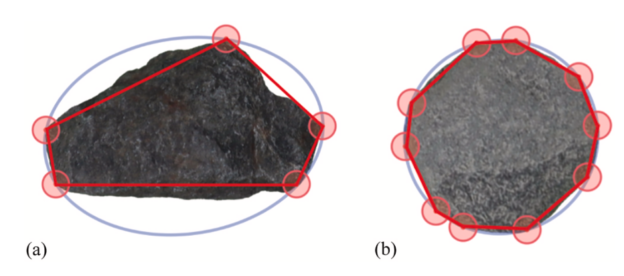T. Binaree, S. Kwunjai, P. Jitsangiam, E. Azéma and G. Jing Assessment of macro and micro mechanical properties of fresh and deteriorated ballast combining laboratory tests and 2D-discrete element methods, Construction and Building Materials, 420, 135525 (2024)
https://www.sciencedirect.com/science/article/pii/S0950061824006664
This research initially investigates the mechanical behavior of fresh and used ballast grain assemblies through a combination of laboratory experiments and discrete element modeling (DEM). The extended Los Angeles abrasion (LAA) test generated the used ballast grains defined at a fouling index (FI) of 40%, while fresh ballast grains serve as the reference material. Morphological analysis of angularity properties of fresh and used ballast grains was employed in producing 2D polygonal shapes implemented in a discrete element code. Numerical simulations using the contact dynamics method examined the bi-axial compression of the 2D-equivalent fresh and used ballast grain assemblies under varying confining pressures. Results show that both fresh and used ballast grain packings exhibit similar stress-strain curves, with fresh ballast packing displaying slightly higher shear strength (5%) at the residual state. Fresh ballast packing is denser than the used one at the peak shear state, while residual states show nearly identical volume fractions. Microscale analysis of contact and force networks reveals that the used ballast assembly is more anisotropic in contact at peak stress. At the same time, both packings exhibit similar contact anisotropy at the residual state. Fresh ballast packing exhibits higher force anisotropy, particularly in frictional forces, explaining the excess shear stress observed at the residual state. These findings suggest that used ballast grains mobilize local friction less efficiently than fresh ballast grains, potentially impacting the lateral strength properties of ballasted tracks. This study provides valuable insights into the behavior of used and fresh ballast grains, serving as a foundation for further investigations.
